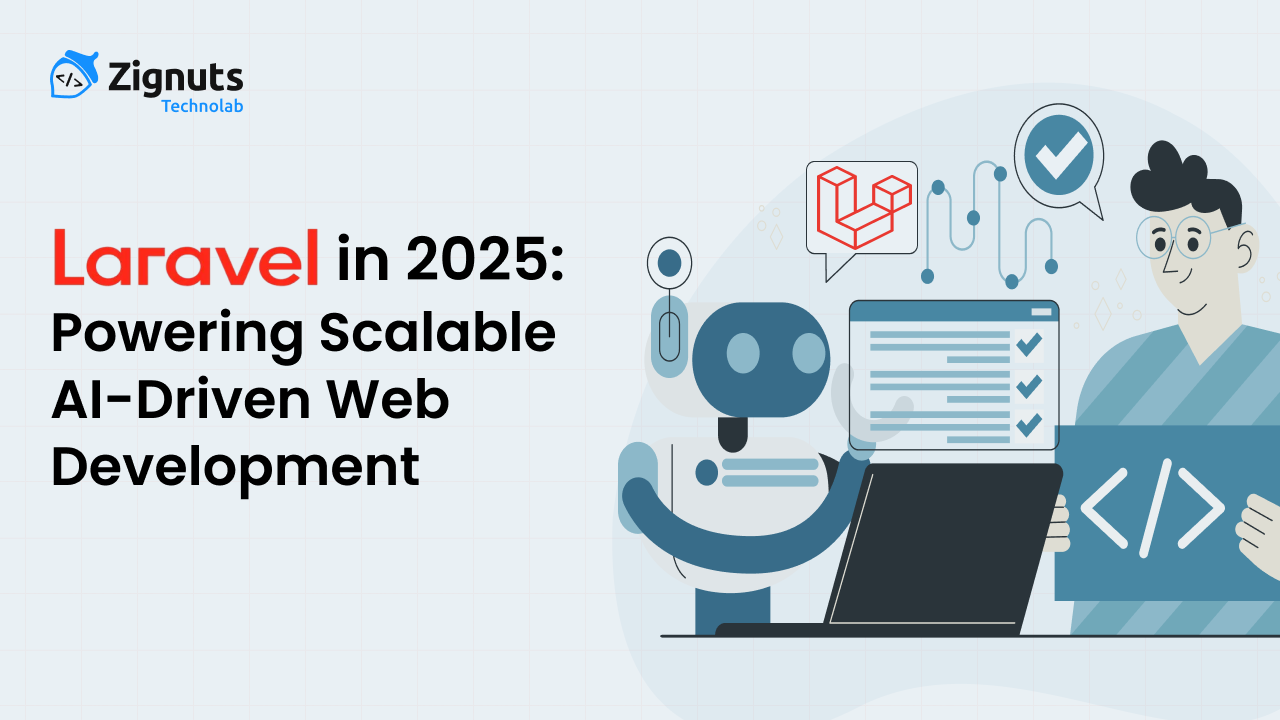Laravel continues to be the most developer-loved PHP framework, known for its elegant syntax, expressive architecture, and vast ecosystem. In 2025, it’s no longer just a backend tool. It's a full-stack powerhouse enabling seamless integration with AI, real-time systems, and modern UI frameworks.
This blog explores how Laravel’s ecosystem, led by innovations like Filament, Livewire v3, Reverb, and Octane, is redefining application development across startups and enterprise-grade solutions.
1. Laravel Filament: The Admin Revolution
Filament has emerged as the go-to admin panel builder for Laravel developers. It’s fast, beautiful, and developer-friendly, a perfect fit for dashboards, CRMs, and internal management systems.
Why Filament is Trending:
- Rapid CRUD generation with advanced customization
- Built-in Forms, Tables, and Widgets that work with minimal configuration
- Plugin ecosystem (Charts, Notifications, Spatie integrations, etc.)
- Seamless integration with Livewire v3 for reactivity
- Polished Tailwind CSS design system for modern UI
Pro Tip: Use Filament’s Resource and RelationManager classes to handle complex data relationships with ease. perfect for large, modular applications.
2. Livewire v3 and Alpine.js: Reactive Laravel Without JavaScript Fatigue
Livewire v3, released with Laravel 11, provides a modern reactive layer that enables you to build interactive UIs without writing a single line of JavaScript.
Key Features:
- Server-driven reactivity for cleaner, more maintainable code
- Improved performance and reduced payloads
- Automatic DOM diffing for real-time updates
- Native Filament and Blade integration
With Alpine.js, developers can easily add interactivity while keeping the Laravel Blade structure intact. An elegant alternative to full SPA frameworks.
3. Laravel Reverb: Real-Time Applications Made Simple
Laravel Reverb is the framework’s official WebSocket server, allowing developers to build real-time features like notifications, chat, dashboards, and collaborative tools. without Pusher or third-party services.
Highlights:
- Zero vendor lock-in
- Powered by Swoole or RoadRunner for extreme concurrency
- Simple broadcasting setup using Laravel Events
- Works seamlessly with Echo and Livewire
Reverb positions Laravel as a first-class choice for real-time web applications and collaborative SaaS tools.
4. AI-Powered Laravel Development
Artificial Intelligence has entered the Laravel ecosystem in multiple ways — from code generation to AI-assisted testing and intelligent search systems.
Emerging Use Cases:
- AI-driven scaffolding tools (e.g., Laragen, Laravel AI Buddy)
- Natural language to Eloquent query translators
- Chatbots and recommendation systems powered by the OpenAI API
- Smart validation and testing assistants
Example: Integrating Laravel with OpenAI or Hugging Face APIs allows you to build personalized experiences like content summarizers, chatbots, or code review helpers.
5. Laravel Octane and Beyond: Speed and Scalability
For performance-focused teams, Laravel Octane continues to be a game-changer. It boosts Laravel’s request handling by keeping the application in memory between requests using Swoole or RoadRunner.
Why It Matters:
- 100x faster response times for heavy workloads
- Ideal for API-first and microservice architectures
- Works perfectly with Reverb and Horizon
Reduces server costs through optimized resource utilization
6. Laravel and Frontend Synergy (Inertia.js + Vue/React)
Modern Laravel projects thrive on Inertia.js. A bridge connecting the Laravel backend with frontend frameworks like Vue 3 and React without building a separate API.
This results in SPA-like experiences while keeping Laravel routing, validation, and middleware intact. Perfect for developers who love a full-stack monolith approach.
7. Cloud-Native and DevOps Enhancements
The Laravel ecosystem now aligns closely with cloud-native principles. Offering smooth CI/CD pipelines, auto-scaling, and environment consistency via Laravel Vapor, Forge, and Docker.
Top Tools:
- Laravel Vapor: Serverless Laravel on AWS
- Forge + GitHub Actions: Automated deployments
- Sail: Docker-based local development setup
These tools make Laravel ideal for high-availability, scalable enterprise apps in 2025.
Conclusion
Laravel in 2025 is more powerful and developer-friendly than ever before. With Filament, Livewire v3, Reverb, and Octane, developers can now build scalable, real-time, and AI-driven applications effortlessly.
The framework’s community-driven evolution ensures Laravel remains the de facto standard for clean, modern, and efficient PHP web development.




.svg)

.svg)



.svg)

.svg)


.png)




.png)
.png)
.png)
.png)
.png)
.png)
.png)
.png)
.png)



